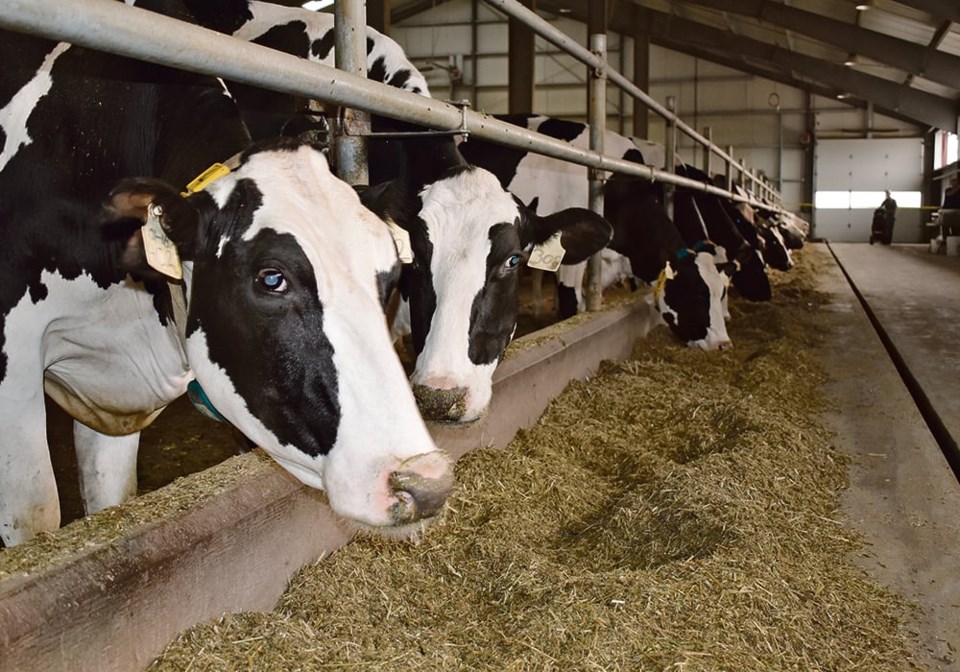WESTERN PRODUCER — A dairy industry group plans to study methane emissions to find genetic traits in cattle that will reduce greenhouse gases while not cutting production.
Lactanet Canada is expected to launch its methane efficiency program in April, adding the genetic trait to its portfolio in evaluating Holstein dairy cattle.
Brian Van Doormaal, chief services officer with Lactanet, said the initiative is in line with the Dairy Farmers of Canada goal to reach net-zero greenhouse emissions from farm level dairy production by 2050.
Canadian researchers have been tracking methane emissions from dairy cattle for more than five years.
Raw data was collected from 500 cows that were part of a Canadian research herd. Researchers at the University of Guelph found they could predict methane emission patterns from dairy cattle without the need to collect the methane, said Doormaal.
“What you can use to predict it is data we get from milk recording,” he said. “Our laboratory analysis of that milk sample has shown that when you are analyzing the milk sample by mid-infrared (MIR) spectrometry… it turns out it can be a pretty good predictor of methane emissions.”
Over the past five years, Doormaal said that initial data collected from the 500 dairy cows was expanded to 750,000 and the results corresponded with the initial testing.
“It is that data, stemming from the research at the University of Guelph, that has shown us that we can use the methane prediction to build a genetic evaluation system rather than trying to get many herds to get actual methane emissions data collected,” he said.
With much of the heavy lifting of collecting emission data being done by the predictive modeling, Doormaal said the next step is to find a genetic key to unlock ways to reduce methane without affecting production levels.
“We don’t want to just select for lower methane emissions because if we did that we would just be selecting for cows that give less milk,” said Doormaal. “What we want to select for are animals that emit less methane for the same amount of milk production and protein production.”
The genes that control methane emissions don’t need to be identified under this system, said Doormaal, because the system is based on husbandry and analysis of the sire’s offspring.
He said a little more than a quarter of a dairy cow’s methane production can be traced to genetic traits passed down, while the rest are controlled by diet, management techniques and environment.
“That 27 percent controlled by genetics gives us a powerful tool,” said Doormaal. “That’s a pretty good, moderate to high, variability.”
Many current genetic trait selection processes for dairy cows are based on five to 10 percent better efficiencies, he added.
The ability to be able to reduce methane emissions by a quarter through only genetic selection is a game changer, said Doormaal, and when combined with other tools such as changing rations, there is a path to reaching the net-zero emission target by 2050.
“Once you make genetic improvements, it’s permanent and it’s cumulative. If you build a generation of calves that have a higher genetic potential, they don’t lose that genetic potential with time and then they produce calves that are higher than them,” said Doormaal.
Next, Lactanet plans to install methane collection devices at four commercial dairy farms in Alberta that use robotic milking and analyze those emissions.




